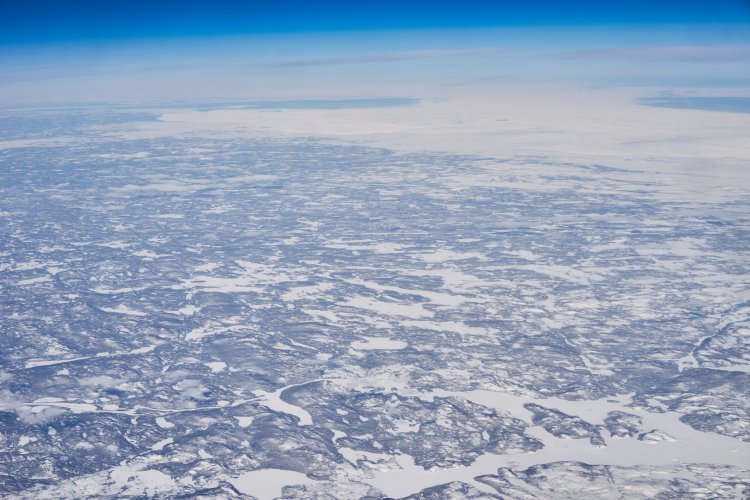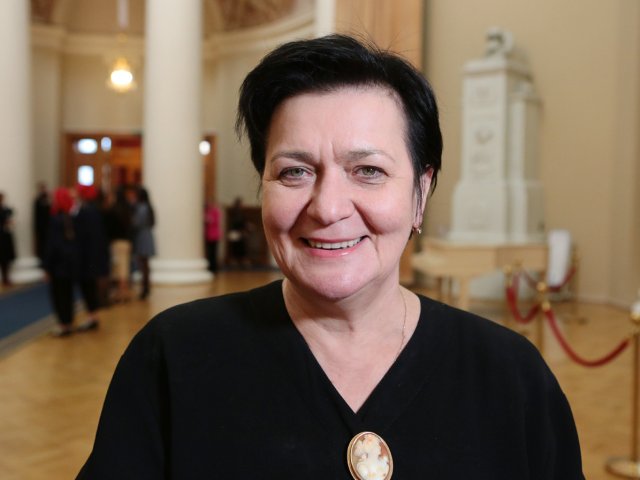80 kilometers to the southwest from Novosibirsk: almost 100,000 hectares of forest on the banks of the Ob River. A research plane flies over the Karakansky Pine Forest every month. Scientists from the Zuev Institute of Atmospheric Optics of the Siberian Branch of the Russian Academy of Sciences measure greenhouse gas concentrations over the south of Western Siberia on the twentieth day of each month. What exactly are the experts studying and what are the findings of the latest studies? Boris Denisovich Belan, Head of the Laboratory of Atmospheric Composition Climatology at IOA SB RAS, Doctor of Physical and Mathematical Sciences, explained it to Scientific Russia.
Test flights that measured various atmospheric parameters from the aircraft began back in the 70's, by the early 80's it became a fairly regular study. First on the Il-14, then on the An-30. When they finished their term, they were replaced by the Optik TU-134 aircraft laboratory. It is used for the majority of scientific flights by Siberian scientists, although its lifetime has also come to an end. Now the airplane has to undergo annual certification. Its main work today is a Russian-Japanese project on the vertical distribution of greenhouse gases over the south of Western Siberia.
“The project was launched in July 1997. Every month we fly over the same area – the Karakansky Pine Forest southwest of Novosibirsk – in the last decade of the month, with the same time interval. In order to estimate the gas exchange between the soil and the atmosphere, we fly out at noon, when the turbulent exchange is most active,” Boris Belan says.
Scientists use the aircraft laboratory instruments to measure the concentration of gases that enter the air from natural sources and are emitted from anthropogenic sources. According to the level of influence on the greenhouse effect, they can be arranged in a certain hierarchy. The main greenhouse gas is water vapor (Н2О). СО2, carbon dioxide, is second. Then comes methane, nitrous oxide – СН4, N2O, and ozone – O3.
At the same time, a complex of equipment studies the dispersion and chemical composition of aerosol particles. The particles are sampled on filters in the laboratory, where they are chemically analyzed. Biologists of the Vector Scientific Center are also involved in this work of the institute. They found out that there are microbes, bacteria, viruses, and fungi in the air, even at heights of 7, 9, and 11 thousand meters, which, once they return to Earth, begin to revive after a frozen state.
The main concern that greenhouse gas research brings today is a summertime increase in the concentration of carbon dioxide in the boundary layer, in the areas where it is supposed to be absorbed by vegetation. Such changes were first noticed in 2005, and today the difference in СО2 concentrations at an altitude of 7 kilometers and in the boundary layer up to two kilometers has decreased by several times.
“We have been looking for a connection between carbon dioxide emissions and factors that are immediately apparent: deforestation, fires, and meteorology, and so far, we have not found a reason for the increase in CO2 concentrations in this region. Ground stations that are installed throughout Western Siberia also indicate such an increase, but only over the southern regions,” Boris Belan emphasized.
Now scientists have concluded that the increase in carbon dioxide emissions is due to human activities and its concentration has grown so much that the forests have reached the limit of their absorption capacity. This is the main version that Siberian scientists are discussing, although they do not exclude that the cause may lie in something else. At the same time, looking at the dynamics within the framework of year-round cycles, it is clear that the growth of СО2 emissions in Russia does not exceed the global level. The irregularity here is that it was in summer when vegetation stopped or reduced the absorption of carbon dioxide.
Other studies show that a significant share of the greenhouse gases that are detected in Russia come from foreign countries. Until recently, the Institute processed information that scientists received while working on the Russian-French YAK-AEROSIB project. Data was collected in ten flight campaigns from 2002 to 2017 on the route Novosibirsk-Mirny-Yakutsk-Bratsk-Novosibirsk. The aircraft laboratory was ascending up to eight kilometers and descending to the lowest possible altitude – the “sawtooth” trajectory allowed the construction of models showing that a lot of carbon dioxide comes to Siberia from China. At the same time, some greenhouse gases transit through Siberia to the Arctic Ocean.
The Institute won a grant from the Ministry of Education and Science for Arctic research in 2019. For the first time in the history of the USSR and Russia, it was possible to measure the troposphere composition over the entire Arctic. In September 2020, scientists flew the Optik Tu-134 over the Barents, Kara, East Siberian, Chukchi, and Laptev Seas. “Fortunately, there is the Arctic Ocean, a place that absorbs СО2 very well: the level of carbon dioxide in the surface layer above the seas is 12-15 ppm less than in the surface air layer above the land during this period,” Boris Belan says.
He notes that the big concern is the “methane bomb” – the permafrost is melting and releasing methane; its volumes in the Arctic are higher than in the coastal areas. In contrast to the studies carried out from ships, measurements from aircraft showed that the highest concentration of methane was over the Kara and Barents Seas. Although oceanologists said that the main emissions should be over the East Siberian, Chukchi, and Laptev Seas.
The problem is that during the period of the experiment, there were emissions that came from Alaska in the study area. There were also fluxes that came from the coast over the Barents and Kara Seas, the area where the highest concentrations were found. Scientists are trying to figure out the origin of greenhouse gases: whether it is marine or coastal, because thermokarst lakes south of the Kara Sea, according to some data, emit an order of magnitude more methane than seawater.
New questions in the field of atmospheric research can be answered by follow-up studies. Boris Belan says that it is necessary to probe the Arctic territory at least 4 times a year.
Photo: marako85 / ru.123rf.com






















